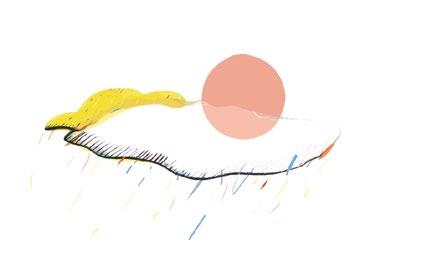
7 minute read
Papergirl The
Words: Alex Throssell
Illustrations: Gill Chantler | gillchantler.com
As unassuming as a leisurely group ride around norwich may sound, it was probably the greatest ride of my life
In the space of two months, I met and then lost possibly the most influential person in my recent years.
It was at a battle of the bands gig in late March that I first met Kiama Petit: a friend of a friend and an uncontrollable bundle of positive energy. In the quiet between acts, she raved about local bike-builder Tom Donhou and told me about the Norwich Papergirl ride, her art-meets-bikes end of university project.
By the beginning of May, four weeks after the Papergirl ride, Kiama, still only 21 years old, unexpectedly passed away.
A year and a half later, all of the good things that have happened to me since can, in one way or another, be traced back to that Papergirl bike ride. In fact, it was on that single day that I (almost) met the love of my life, found one of my closest friends and got to know the people at the bike shop I’d go on to work with for the next year or so.
Hindsight is a wonderful thing, but all too often I seem to focus on the negatives. Especially after a long day’s riding, I rarely remember the sunsets, the descents and the the conquered heights, but can far too vividly recall the rain, the wind and the punctures. The more fortunate amongst you might experience the catharsis of having it the other way around, but for me, it’s the grind, the pain, and the frustration that tend to repeat for a long while after. For possibly the only time I can remember before or since, the Papergirl ride was different.
As unassuming as a leisurely group ride around Norwich may sound (and, truth be told, as unassuming as the actual cycling was), looking back it was probably the greatest ride of my life. And although that sounds far fetched, I think that was the point all along. Kiama’s university studies focused on the ‘participatory, analogue, non-commercial and impulsive.’ Her mantra for the Papergirl ride was that art, and the gift that it gives, should be a part of everyone’s daily life, even if it’s just to brighten it for a moment. Some, like me, would experience a fiercer brightness than others.
To pimp our rides a little before the event, Kiama arranged a free-for-all customisation session at a newly opened community bike project. Aided by the project’s founder, Jason, we went about transforming our bikes. Several hours later I rode away with a handcut kaleidoscopic wheel cover, whilst others had attached flags, tassels and flowers. When we left, now considerably more eye-catching than when we arrived, I had no idea I’d return to that workshop in September, shake hands with Jason, and start a new job as a bicycle mechanic.
Although the group was modest - only 21 cyclists in total - it covered a brilliant spectrum. From young girls to old men, to people like me who just wanted to look cool, each carried a custom messenger bag full of carefully wrapped artwork and spread happiness by gifting a random piece of art to whichever passersby we chose. Part of the bunch, but often riding with me up front, was a similar-minded bike nut who whooped “Free art!” in a range of accents, introduced me to fixed gear riding, suggested we turn an old house into a bike café and became one of my best friends in the process. And just as the Papergirl riders were a rag-tag, happy-go-lucky bunch, so too were the recipients of the random art-gifts. There were curious children, smiling pensioners, surprised exclamations of “and it’s free?”, and one particularly notable bohemian cyclist-type who swerved across two lanes of traffic with reckless abandon at the promise of free art, joyously colliding with a kerb seconds after claiming his prize. Although I didn’t know it then, one of the art gift receivers just so happened to be the girl I would fall in love with – a fact I was to discover on our first date six months later.
Even though it went against the whole spirit of the event, by the end of the ride I’m pretty sure we’d all had an urge to purloin a piece of art ourselves. I know this because over the course of the day several people asked Kiama whether they could take one as a memento. But with the integrity of her project in mind, she politely informed us that we were to give everything away and that we’d hopefully come away with something ourselves as a result. I’d guess that a few probably flouted her advice regardless, but for those like me that dutifully obeyed, Kiama’s words resonated more deeply than she may have intended. And indeed, the gifts that I took from the day were far richer than any piece of art could ever have been.
Cut down by a completely unexpected brain aneurysm, Kiama’s last great act was the spread of happiness to whoever would receive it, all from her trusty sit-upand-beg. And oh, what a wonderful world it would be if we all cycled the same way. It was just one day, and only a few hours on the bike, but I found the love of my life, one of my closest friends, and made memories that will stay with me forever.
In memory of Kiama Petit
AS WELL AS SELLING BOTH PRINTED AND DIGITAL VERSIONS OF BONESHAKER MAGAZINE, WE CREATE EXCLUSIVE PRINTS, T-SHIRTS, POSTCARDS & CAPS – ONLY AVAILABLE THROUGH OUR ONLINE SHOP: BONESHAKERMAG.BIGCARTEL.COM
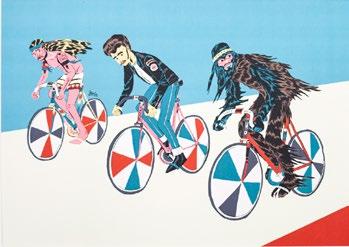
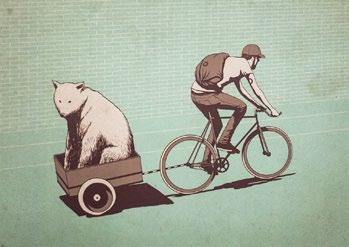
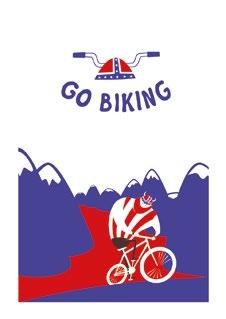
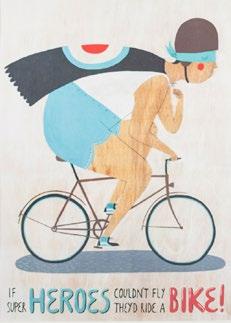
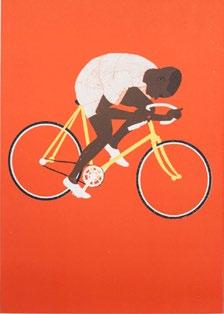
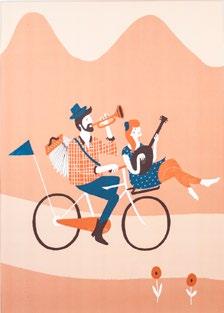
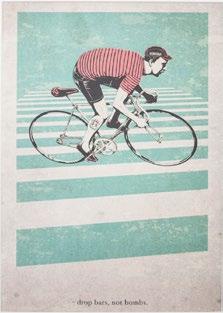
INTERVIEW BY MATT COOK / HELLOMATTCOOK.COM
PHOTOS BY DUNCAN ELLIOTT / DUNCANELLIOTT.NET
Pittsburgh-based Michael Brown doesn’t just build frames for people who love riding bikes, he builds them for people who can’t ride bikes.
Handmade frames have always held a special mystique, the feeling that they can draw out a different kind of ride, different kind of rider.
But inside the Maestro Frameworks workshop this is more than just a feeling. Since 2011 Mike Brown has been welding two extremes of the cycling world together. As well as making mountain bike pioneer Keith Bontrager’s favourite handmade bike, he’s made headlines with builds for riders who usually find it impossible to find a bike that works for them. When he was a boy Mike Brown didn’t especially like bikes. He was active and athletic, but they “just weren’t for him”. He went rock climbing and skateboarding instead, and “spent a lot of time in the ocean”.
And it might have stayed that way if he hadn’t suffered a bad rock climbing fall at the age of 23. The injury kept him on solid ground and encouraged him to re-evaluate his relationship with the bicycle. What followed was a remarkable transformation. Relocating to Pennsylvania he took up road racing, then steered towards the still fledgling sport of mountain biking. (He’s proud to have been owner of one of the first mountain bikes on the east coast.) He also became more than a little handy with a wrench and eventually opened up his own bike shop. It was here that he acquired his nickname, courtesy of “a gentleman who raced on the Puerto Rican Olympic team”. That gentleman was Edwin Torres, who competed in the 1968 Mexico Olympics. “I built him a set of wheels and he called me the master mechanic. The Maestro.”
And so the Maestro was born. But not too long afterwards, the Maestro went dormant, when Mike took a full time engineering job in the natural gas industry.
Then, in 2009, he quit. “I just wanted something to do,” he says. “So I decided to build bikes.” He makes it sound so simple. (There is, in fact, a beautifully simplistic logic to everything Mike tells me. A kind of undulating rhythm, like cycling in oral form.)
As it turns out, actually learning to build bikes isn’t that simple. For a start you need the right teacher. After a long search Mike found his Sensei in Mike Flanigan of Ant Bicycles, one of the original founders of Independent Fabrication. The one-on-one full-time tuition they discussed was still untrialled, and Mike moved from Pittsburgh to Boston to build bikes nonstop for two months. “I’d build ’em, ride ’em and then break ’em,” he says, to study the welds. The price tag for the teaching alone was $30,000. So was it a dilemma to invest that much money? “Yes it was, but at the age of 54, 55 … you have to give it a go. You have to follow your dream, no matter what it might cost.”
Mike set up his workshop in Pittsburgh, equipping it with vintage hardware, including a World War II Nichols Mill (“I think they just work better. I like the way they feel”). After a little practice he began turning out bikes. It wasn’t long before Mike began to attract high praise, most notably from Keith Bontrager who described a Maestro-build as his “favourite handmade bicycle on the market”.
But then something unexpected happened. It started with a visitor, Vince Eberie from Austin, Texas, who had been visiting the Bike Heaven museum just down the road from Mike’s workshop. Vincent’s dwarfism made it impossible to find a bike with geometry that suited him. He was inspired by one he saw in the museum, when somebody there mentioned Mike’s name. He wanted a single speed like his friends, so Mike built him one with 24-inch wheels.
“It was great, to see the smile on his face. And to get the email saying, ‘Hey, I put on 35 miles the other day … I never could do that in my life’, is really cool.”
But it was Mike’s next special project that caught all the news. Ukrainian-born Pittsburgher Mike Trimble has no arms, a birth-defect caused by the Chernobyl nuclear disaster. Adopted by a US couple when he was seven, Mike graduated with a degree in Political Science and now lives independently, but had never been able to ride a bike. He had a bike, a cruiser, which a sports teacher had adapted for him but wasn’t right. Despite approaching a number of other bike shops and builders he had been turned away again and again. And then he found the Maestro.
Where so many others had been nervous, Mike didn’t think twice. In the end, instead of building him a bike, Mike decided the best solution would be to modify Trimble’s existing one.
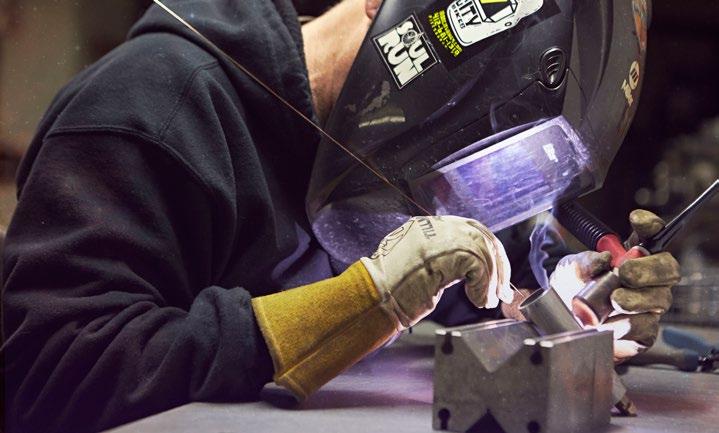
“My philosophy was ‘let’s give it a go’. The whole idea was to get him on a bike and see how it went, and after that work on improvements. And that’s kind of what the new bike’s going to be. The improvements.”
The new bike that Mike is only now building from scratch will include an eight-speed internal hub and a coaster brake. A friend of his, also an engineer, is working out a way Trimble can gear shift with his stump.


